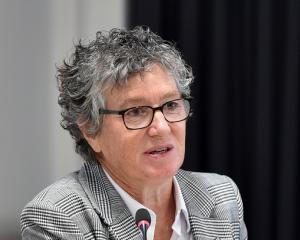
The proposal is in a summary of the reports on seismic strengthening options for 12 university buildings, including its historic clocktower building.
The summary was posted on a website launched by the university to keep staff informed about its quake strengthening plans.
The buildings it was considering knocking down are the arts building, found to be 29% of new building standard (NBS) for earthquake strength, and the property services building (19%).
The university was also considering temporarily rehousing all staff from the arts building - possibly to the former LivingSpace hotel - while it carried out strengthening work on the building.
The other options for the property services building were carrying out strengthening on parts of the building or upgrading the whole building at once.
Other buildings for which the university was weighing up its strengthening options included the clocktower building, which at 45% of NBS was not deemed earthquake prone (less than 34% of NBS) but still did not meet the university's 67% minimum.
The options being considered for the clocktower building include strengthening it ''floor by floor'' - meaning staff would need to be rehoused - or ''room by room''.
To bring the clocktower building to 100% of NBS, there needed to be a ''tying together'' of the external walls through use of steel pins or dowels, improvements to the beams supporting floors, and beams and columns supporting walls.
Other strengthening projects in the works likely to cause disruptions to staff included work on the geology building (35%) and the School of Medicine's Lindo Ferguson building (38% of NBS) and Scott building (25%). To bring the Lindo Ferguson building to 100% of NBS, would require cross-bracing of the roof, new columns to support wall beams, improvements to steel floor beams and general floor and roof strengthening.
Bringing the Scott building up to 100% required improvements to steel floor beams, new columns, an independent support frame for the Scott and Lindo Ferguson bridge extension and general floor and roof strengthening.
To bring the geology building up to 71%, the external walls needed to be tied together using pins or dowels, and cross-bracing of the roof and connection of roof framing to walls was required to bring it up to 100%.
Other options reports summarised on the website include those for Cumberland College, Aquinas College and Arana College, which the university was considering strengthening this summer, and for the St David 2 building, which it plans to strengthen this year.












